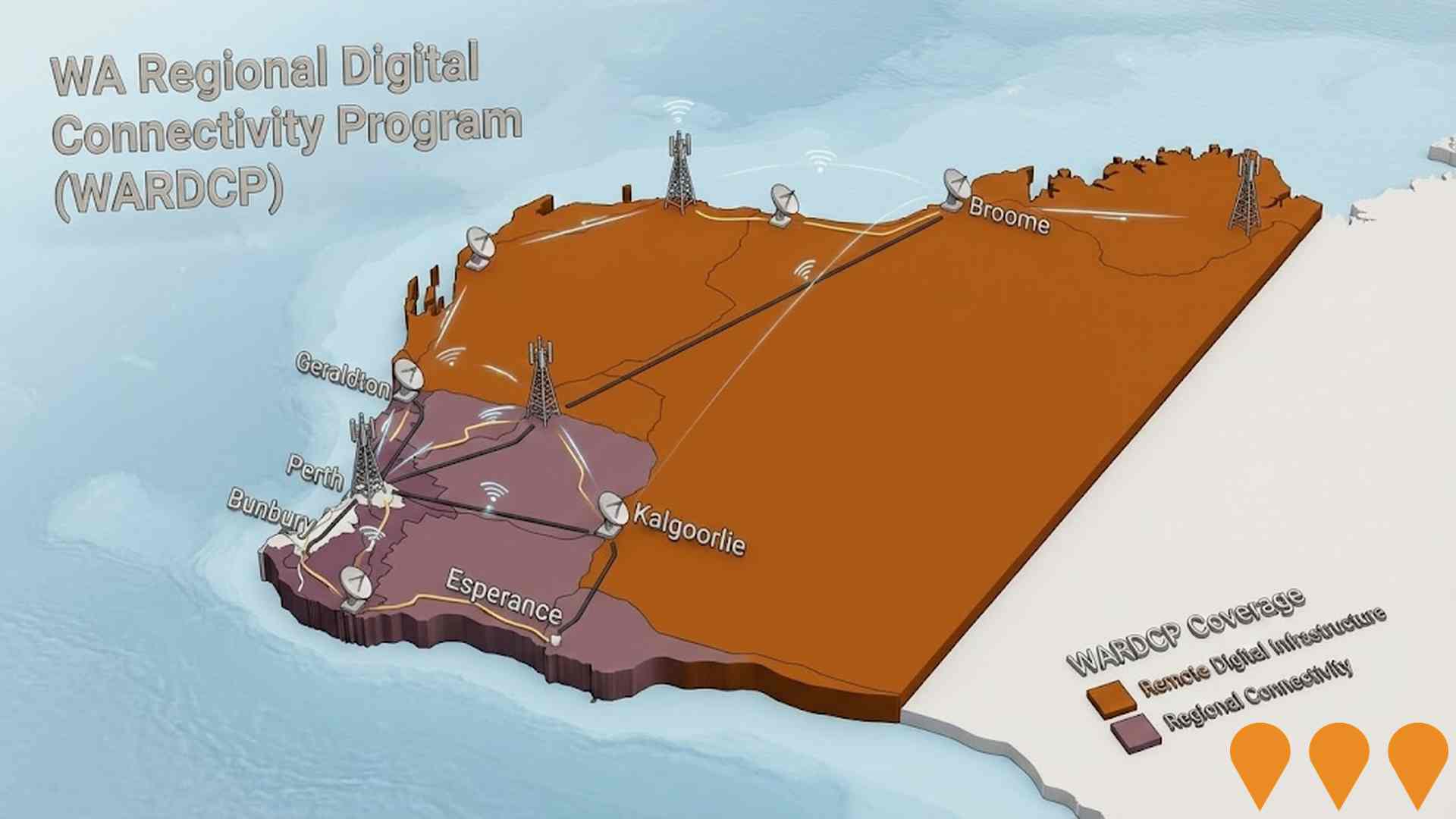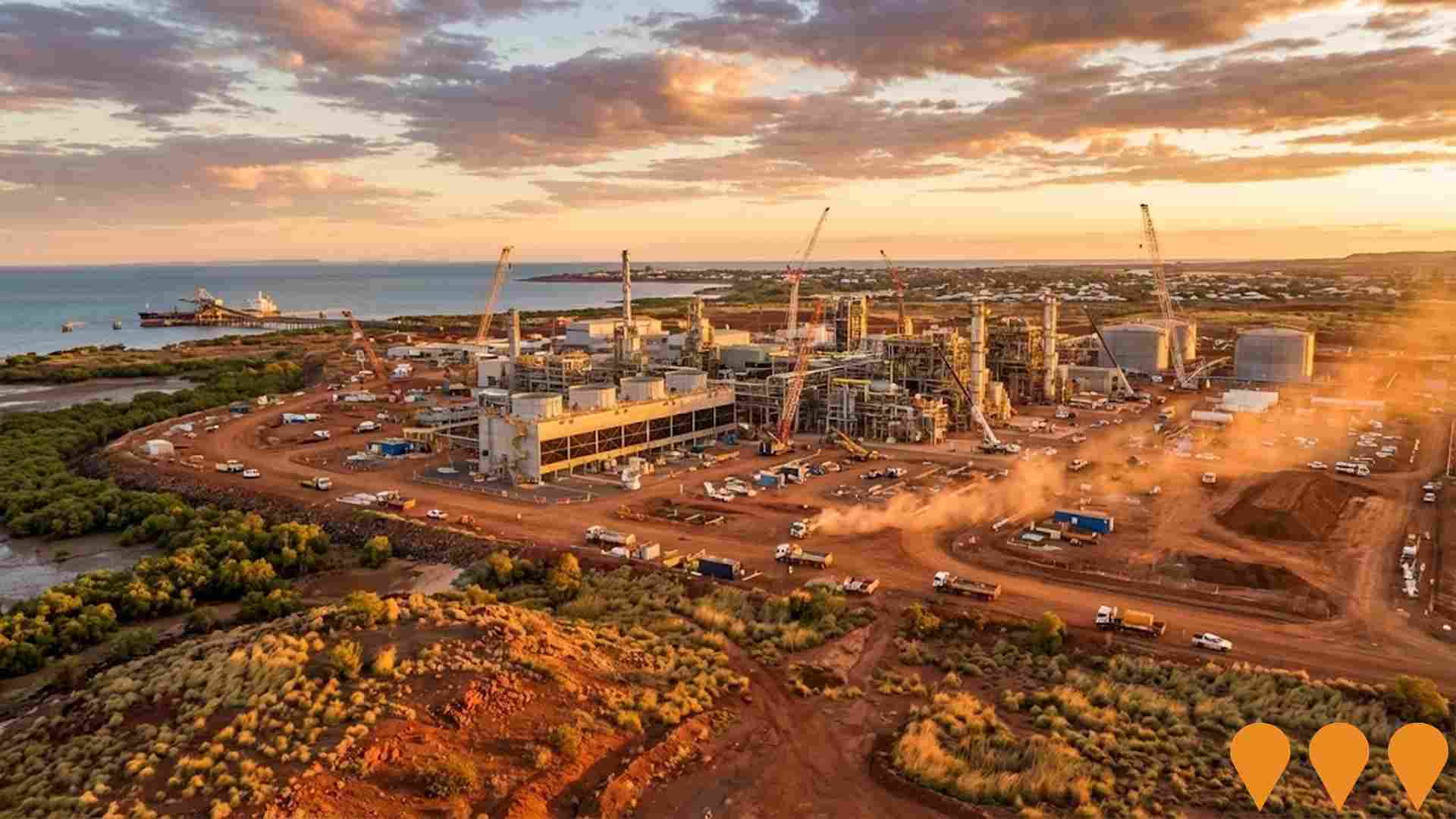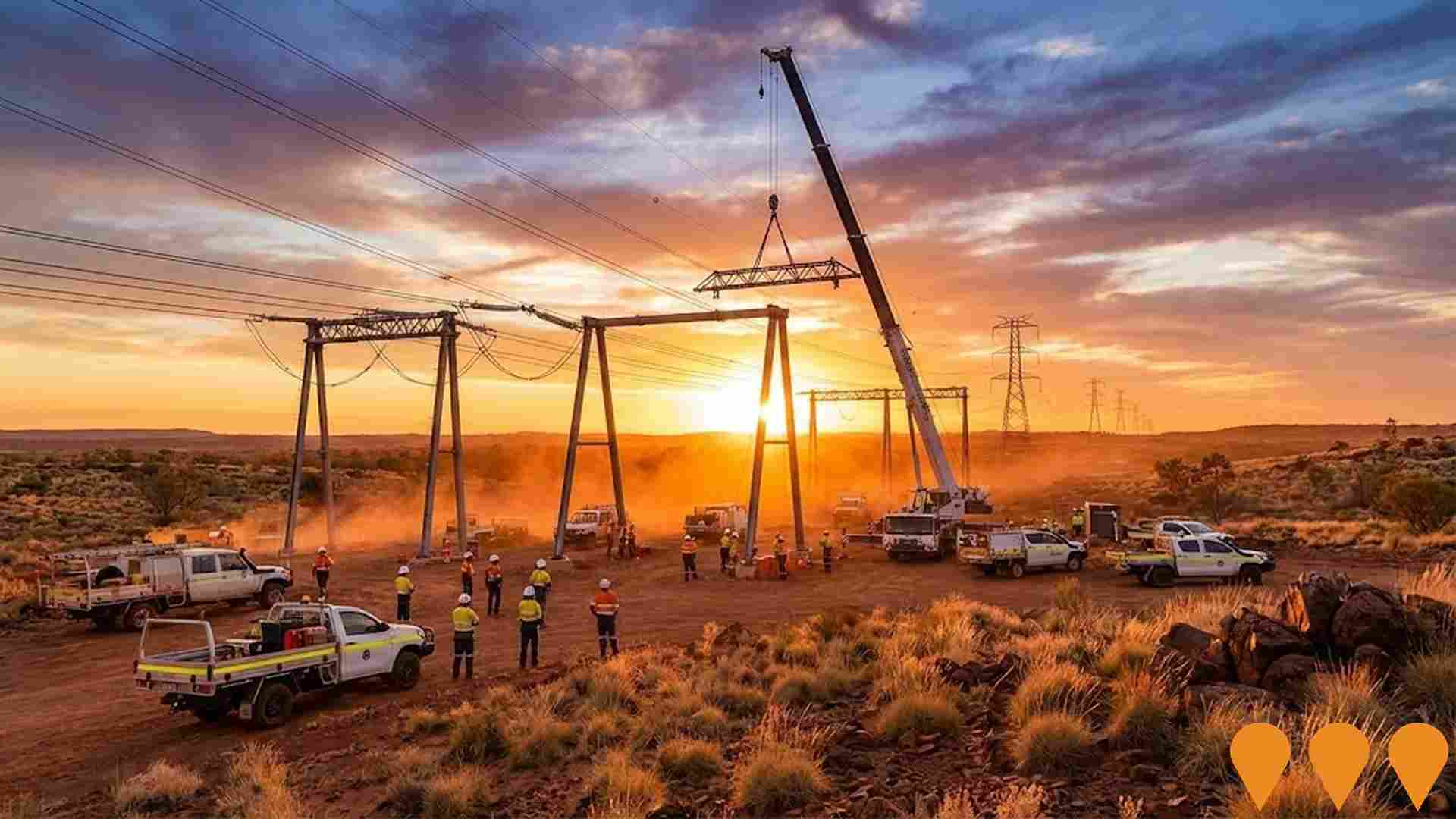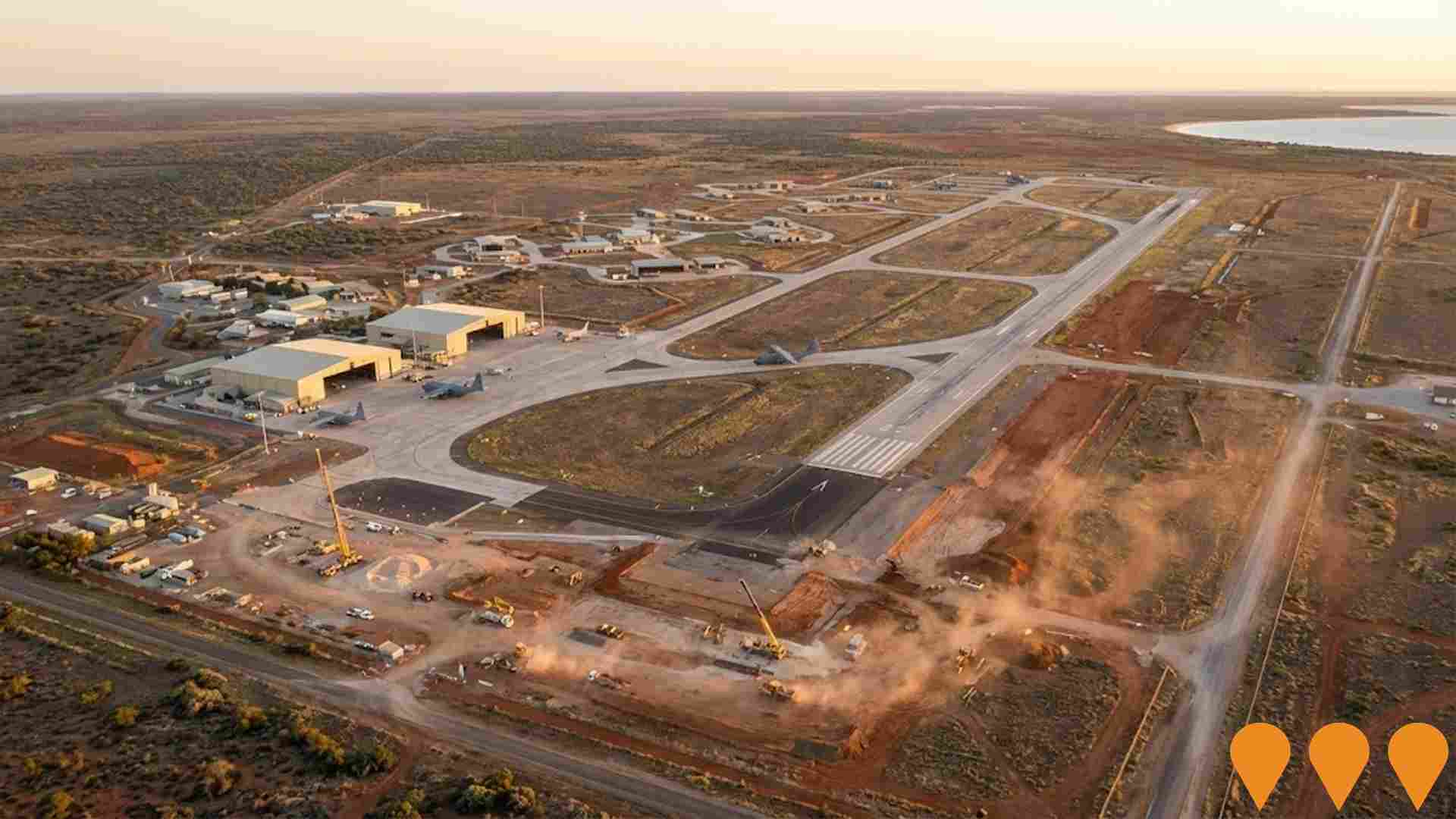Chart Color Schemes
est. as @ -- *
ABS ERP | -- people | --
2021 Census | -- people
Sales Activity
Curious about local property values? Filter the chart to assess the volume and appreciation (including resales) trends and regional comparisons, or scroll to the map below view this information at an individual property level.
Find a Recent Sale
Sales Detail
Population
An assessment of population growth drivers in Karratha reveals an overall ranking slightly below national averages considering recent, and medium term trends
Karratha's population, as of August 2025, is approximately 19,137. This figure represents a growth of 2,124 people since the 2021 Census, which reported a population of 17,013. The increase is inferred from ABS estimates: 19,051 in June 2024 and an additional 60 validated new addresses post-Census. This results in a density ratio of 142 persons per square kilometer. Karratha's growth rate since the Census (12.5%) exceeds both national (8.6%) and non-metro averages, indicating significant population expansion. Natural growth contributed approximately 63.7% to overall gains during recent periods.
AreaSearch uses ABS/Geoscience Australia projections for each SA2 area, released in 2024 with a base year of 2022. For areas not covered by this data and post-2032 estimates, AreaSearch employs growth rates by age cohort from the ABS Greater Capital Region projections (released in 2023, based on 2022 data). Future projections suggest population growth just below the median of national non-metropolitan areas. By 2041, Karratha's population is expected to increase by 1,637 persons, representing an 8.1% total gain over 17 years.
Frequently Asked Questions - Population
Development
AreaSearch assessment of residential approval activity sees Karratha among the top 30% of areas assessed nationwide
Karratha averaged approximately 56 new dwelling approvals annually over the past five financial years, from FY21 to FY25, totalling 280 homes. In FY26 up to June, 40 dwellings have been approved. This averages out to around 6.3 new residents per year for each dwelling constructed during these years.
The high demand coupled with limited supply has led to price growth and increased buyer competition. Developers target the premium market segment, with an average construction value of $752,000 per dwelling. Commercial approvals this financial year amount to $88.9 million, indicating robust local commercial activity. Compared to the Rest of WA, Karratha's development levels are similar on a per capita basis, maintaining market balance consistent with the broader area, which is below national averages, suggesting maturity and potential planning constraints.
All recent building activity consists of detached houses, preserving the area's low-density nature and catering to space-seeking buyers. Interestingly, developers are focusing more on traditional houses than the current mix suggests (80.0% at Census), indicating strong demand for family homes despite density pressures. The estimated population per dwelling approval is 397 people, reflecting a quiet, low-activity development environment. Future projections anticipate Karratha adding 1,551 residents by 2041. With current construction levels, housing supply should meet demand adequately, creating favourable conditions for buyers while potentially enabling growth that exceeds current forecasts.
Frequently Asked Questions - Development
Infrastructure
Karratha has emerging levels of nearby infrastructure activity, ranking in the 20thth percentile nationally
Changes to local infrastructure significantly influence an area's performance. AreaSearch has identified nine projects likely to impact the area. Key projects include Madigan at Baynton West, Perdaman Urea Project - Project Destiny, Gap Ridge Homemaker Centre, and Karratha Senior High School Upgrade. The following list details those most relevant.
Professional plan users can use the search below to filter and access additional projects.
INFRASTRUCTURE SEARCH
 Denotes AI-based impression for illustrative purposes only, not to be taken as definitive under any circumstances. Please follow links and conduct other investigations from the project's source for actual imagery. Developers and project owners wishing us to use original imagery please Contact Us and we will do so.
Denotes AI-based impression for illustrative purposes only, not to be taken as definitive under any circumstances. Please follow links and conduct other investigations from the project's source for actual imagery. Developers and project owners wishing us to use original imagery please Contact Us and we will do so.
Frequently Asked Questions - Infrastructure
Resources Community Investment Initiative
A $750 million partnership between the Western Australian Government and seven major resource companies (Rio Tinto, BHP, Woodside Energy, Chevron Australia, Mineral Resources, Fortescue, Roy Hill) to co-fund community, social and regional infrastructure projects across regional Western Australia, with strong focus on the Pilbara, Goldfields, Kimberley, Mid West and Gascoyne.
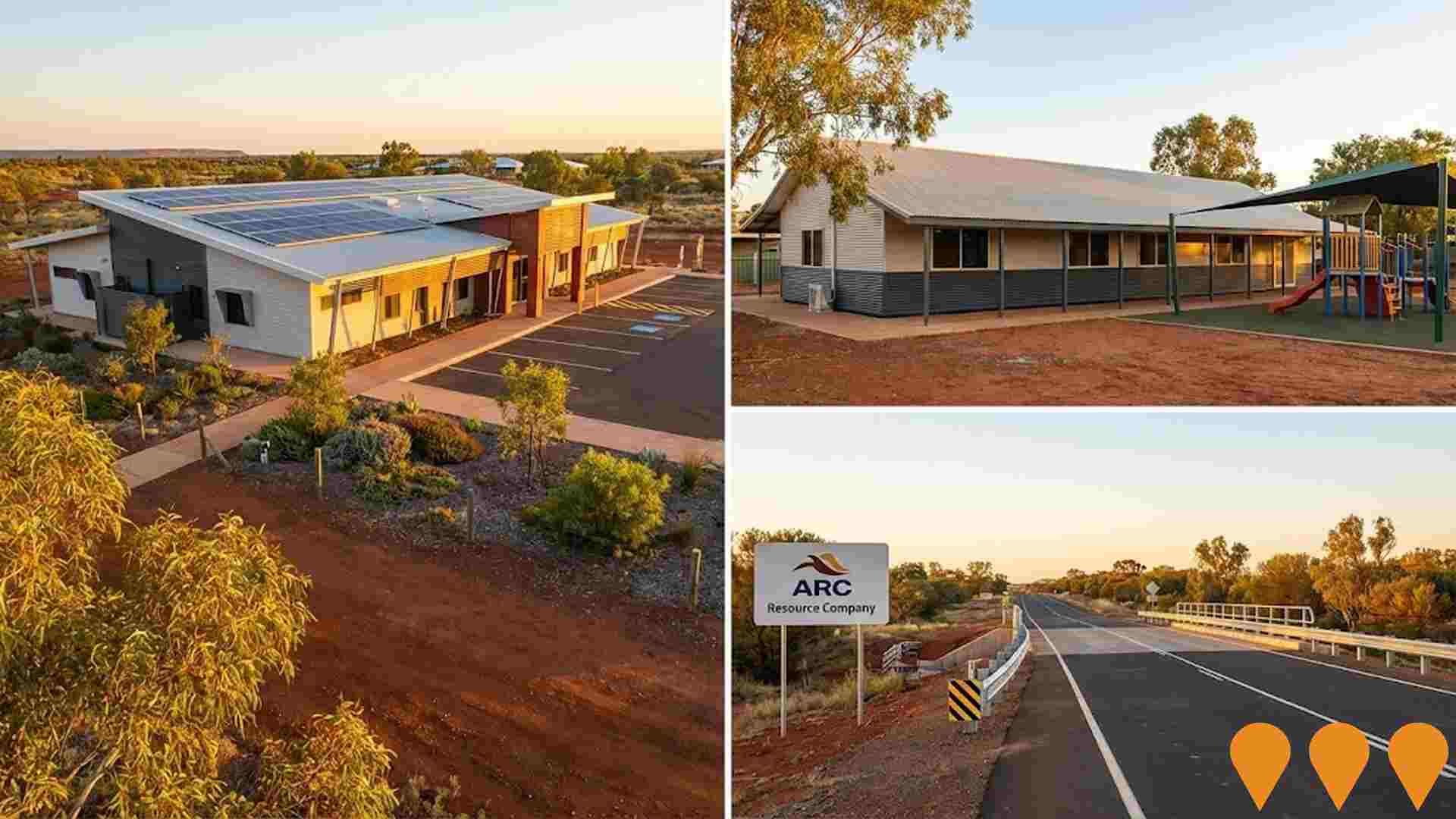
Yuri Hydrogen Project
Australia's first large-scale hydrogen plant with 10MW electrolyser, 18MW solar PV system, and 8MW/5MWh battery producing 640 tonnes of renewable hydrogen annually for Yara Pilbara Fertilisers.
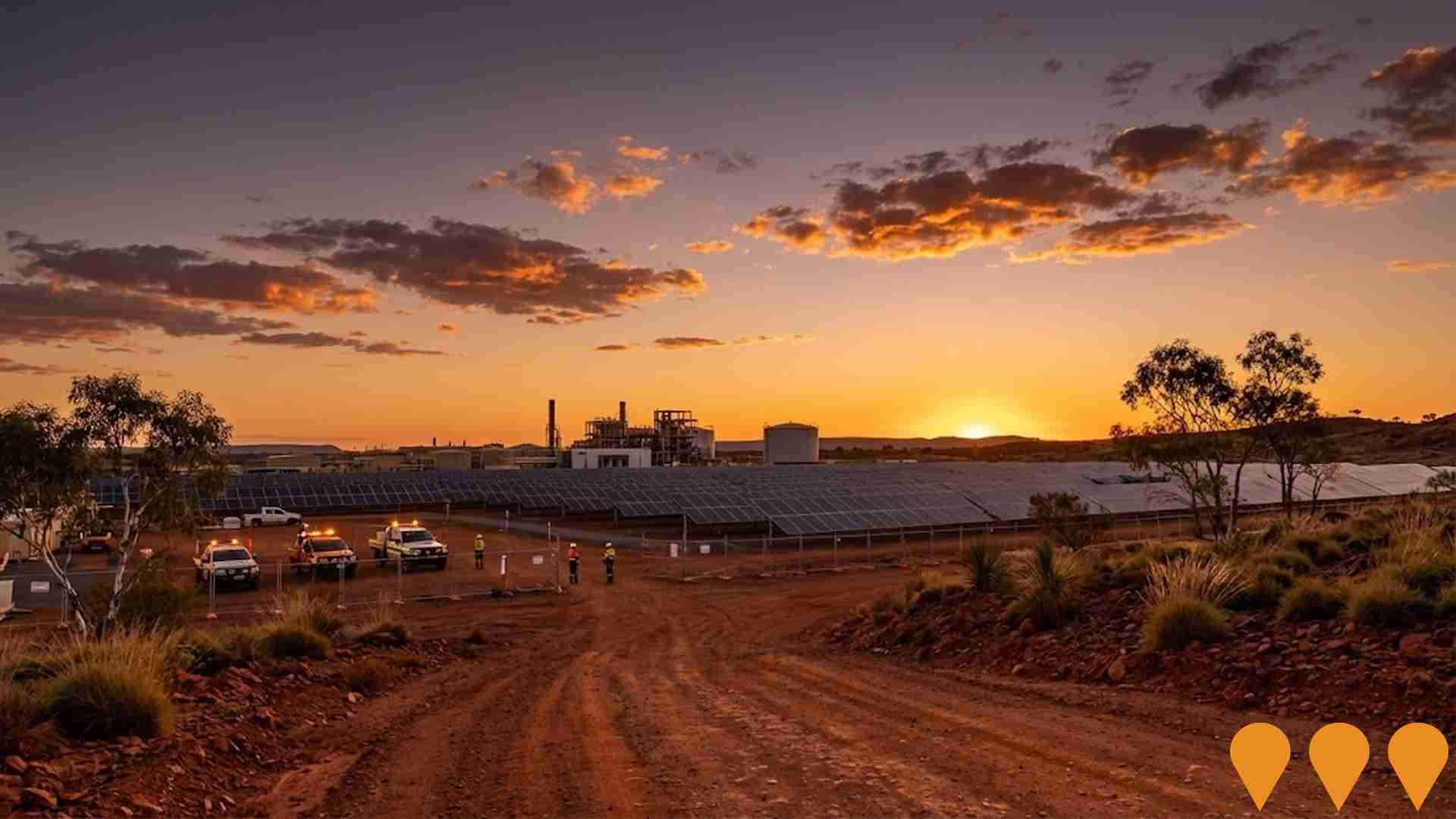
Gap Ridge Homemaker Centre
Karratha's first dedicated homemaker centre featuring a 7,600 square meter Bunnings Warehouse and nine large format retail tenants. The only Bunnings Warehouse in the Pilbara region, servicing demand for DIY/hardware, furniture, electrical appliances, white goods, floor coverings and other bulky goods retail. Located adjacent to residential developments with a current homemaker goods trade market estimated at $178 million, expected to grow to $249 million by 2026. Approved by Regional Development Assessment Panel on July 29, 2025.
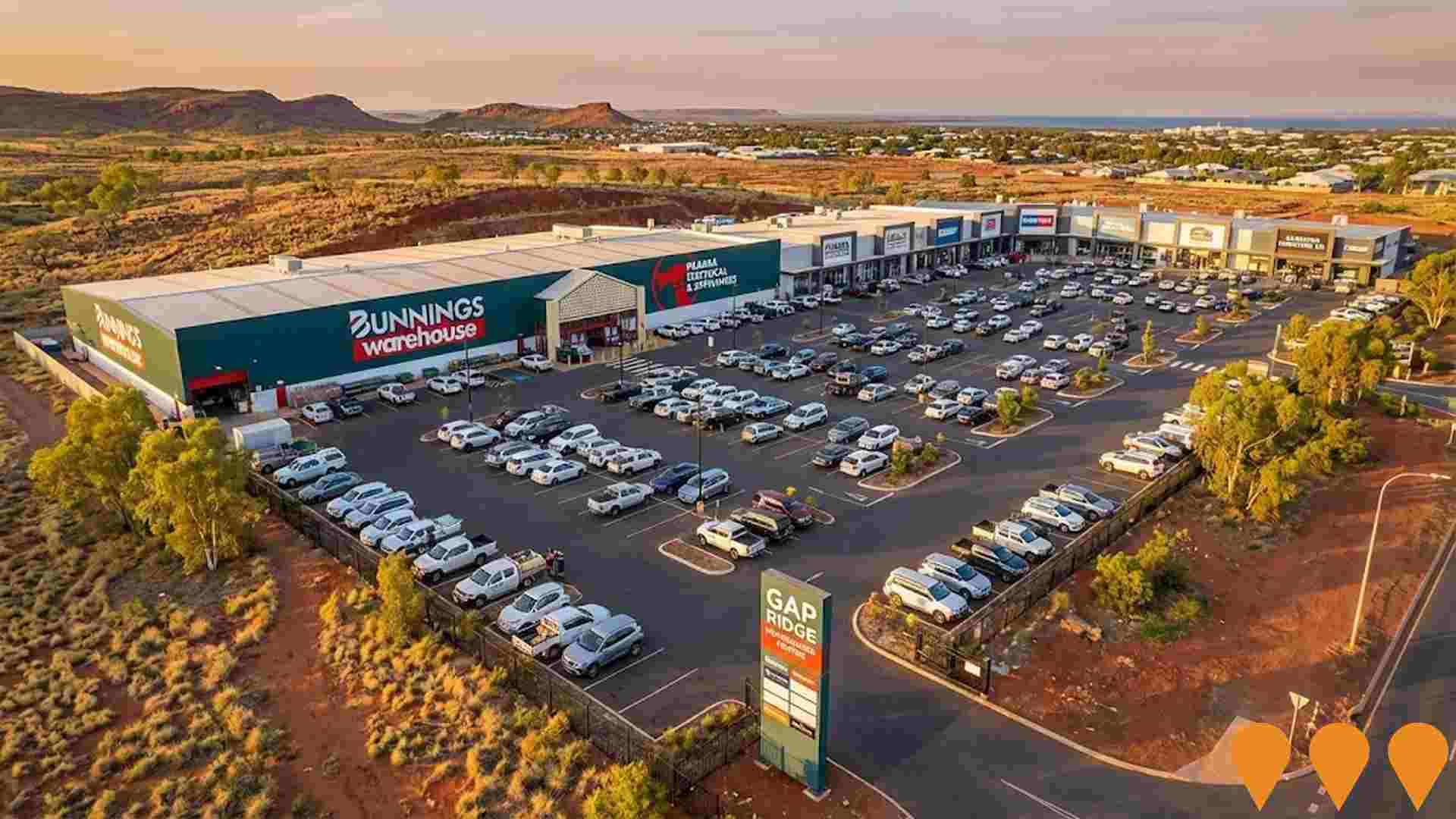
Tambrey Village Shopping Centre
Tambrey Village Shopping Centre is a completed $17 million neighbourhood shopping precinct that opened in November 2020, serving the western suburbs of Karratha including Nickol, Millars Well, Baynton and Baynton West. The centre features a Good Grocer IGA supermarket operating 24/7, Hungry Jacks, Liberty fuel station, pharmacy, medical centre, dentist, liquor store, Grand Central Tavern sports bar, City of Karratha Indoor Play Centre, and various retail tenancies. The development created over 150 local jobs and provides essential convenience shopping for approximately 10,700 residents in the catchment area. The shopping centre is part of the broader Tambrey Neighbourhood Centre precinct, a 9.6-hectare mixed-use development site where DevelopmentWA continues to seek proposals for additional residential and commercial development opportunities.
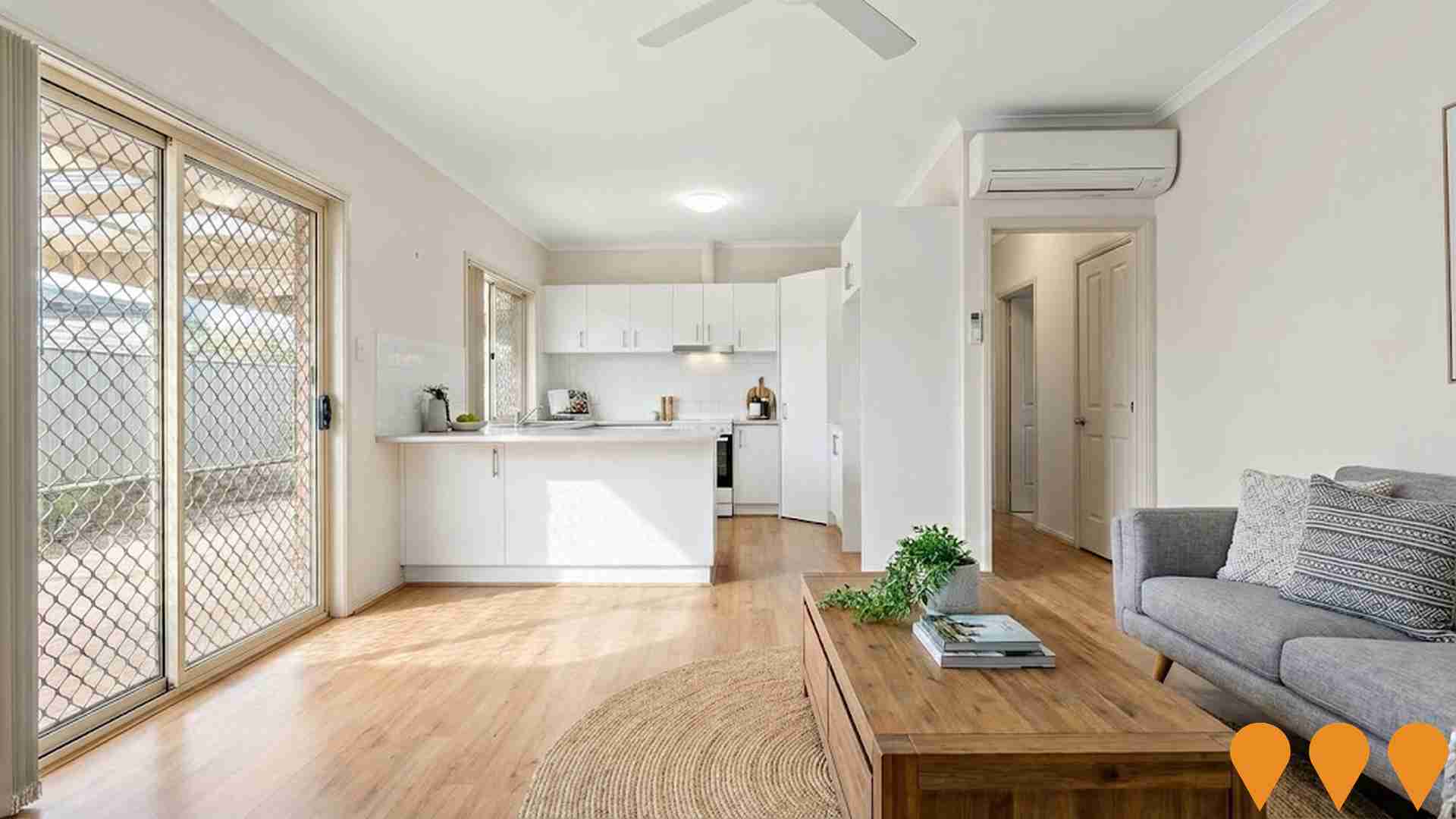
Madigan at Baynton West
Madigan at Baynton West is Karratha's newest residential community offering modern affordable living in the popular suburb of Baynton. The masterplanned estate features residential lots ranging from 342sqm to 585sqm, positioned close to Baynton West Primary School, community centre, shops, and recreational facilities. Perdaman acquired 85 lots to build approximately 100 homes for workers of the 7 billion dollar Karratha Urea Project, with construction commenced in late 2024 and expected completion by June 2027. Stage 3 is in planning to deliver an additional 400 lots, plus land for a childcare centre and new primary school. The development emphasizes climate-responsive design principles and aims to create a vibrant, family-oriented community with modern amenities and landscaped public open spaces.
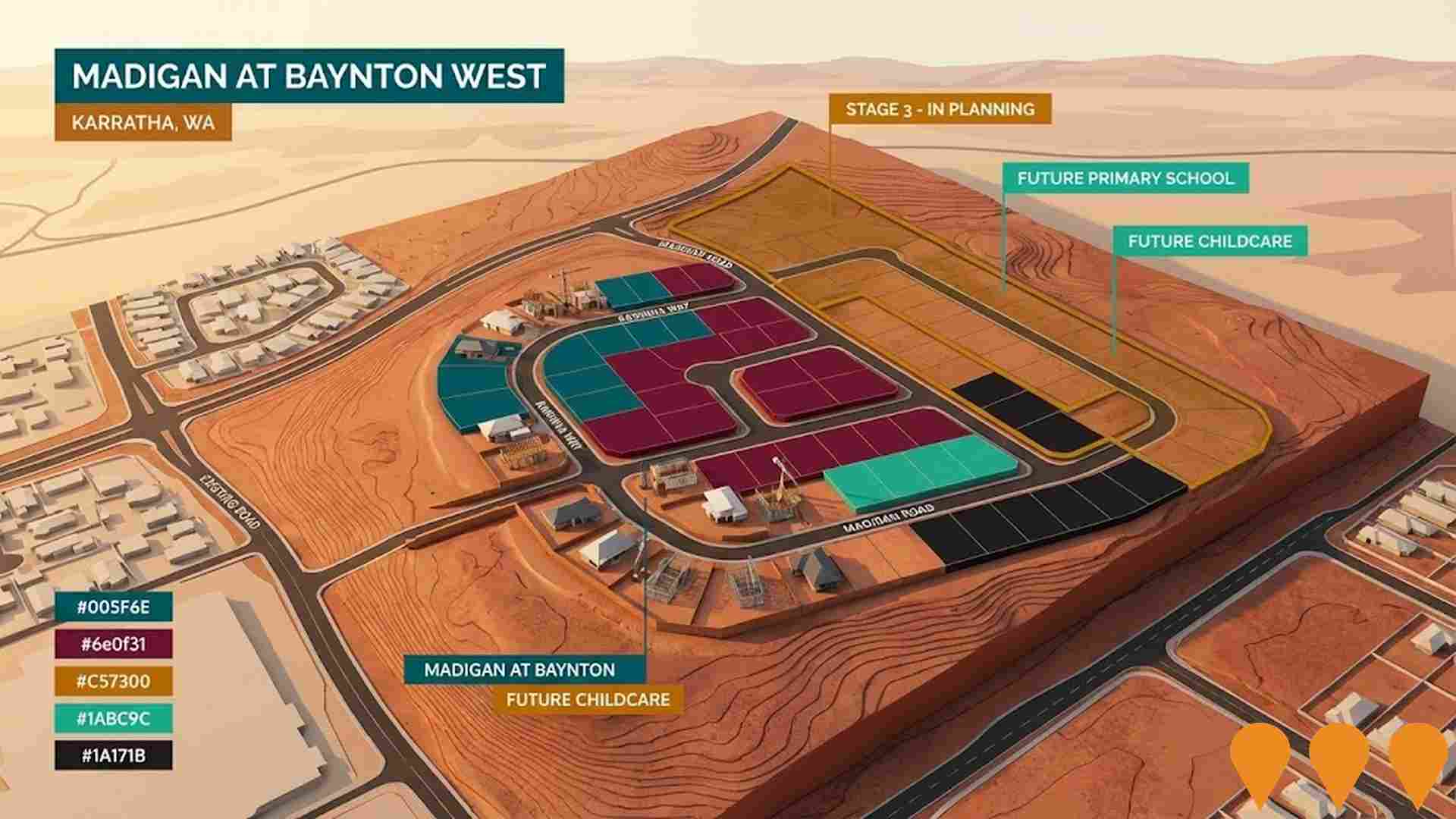
The Quarter Karratha
Mixed-use civic, retail and commercial precinct anchored by The Quarter HQ office/retail building, a city square and 46 service worker apartments, delivered as part of the Karratha city centre revitalisation.
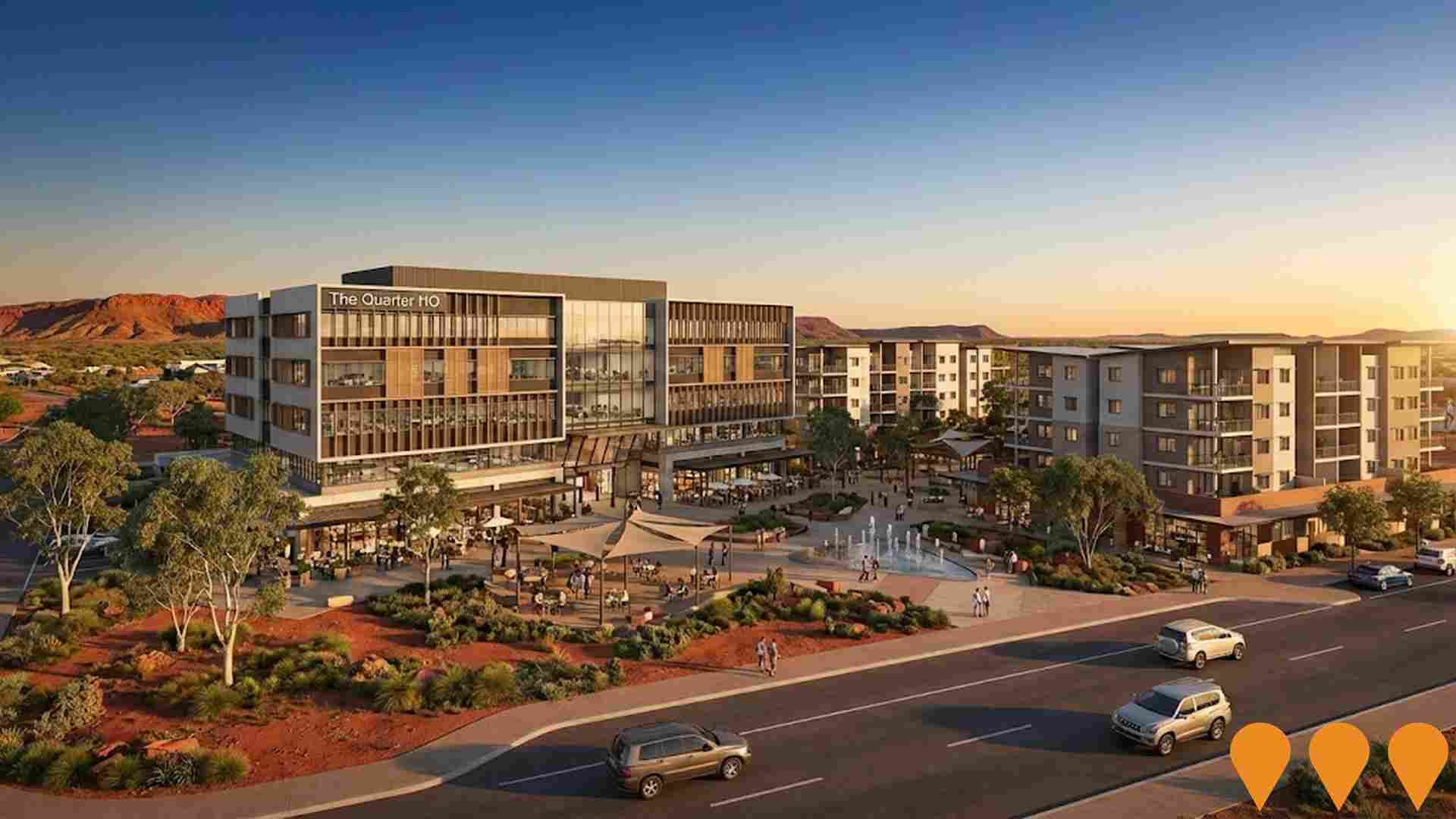
Fortescue Decarbonisation Plan
Fortescue's Pilbara Decarbonisation Plan is a long term program to eliminate fossil fuel use and achieve Real Zero scope 1 and 2 emissions across its Australian iron ore operations by 2030. The company has committed about US$6.2 billion (around A$9.5 billion) to deploy 2 to 3 GW of new wind and solar generation, large scale battery storage and an integrated 220 kV transmission network linking mine, rail and port sites across the Pilbara. Current works include a 190 MW solar farm at Cloudbreak, which is more than one third through construction and forms part of the Pilbara Solar Innovation Hub, together with multiple 220 kV transmission line packages connecting sites such as Solomon, Eliwana, Cloudbreak and Christmas Creek. Construction ramped up from 2024 and is expected to continue in stages through to 2030 as the renewable grid and electrified mining fleet are progressively delivered.
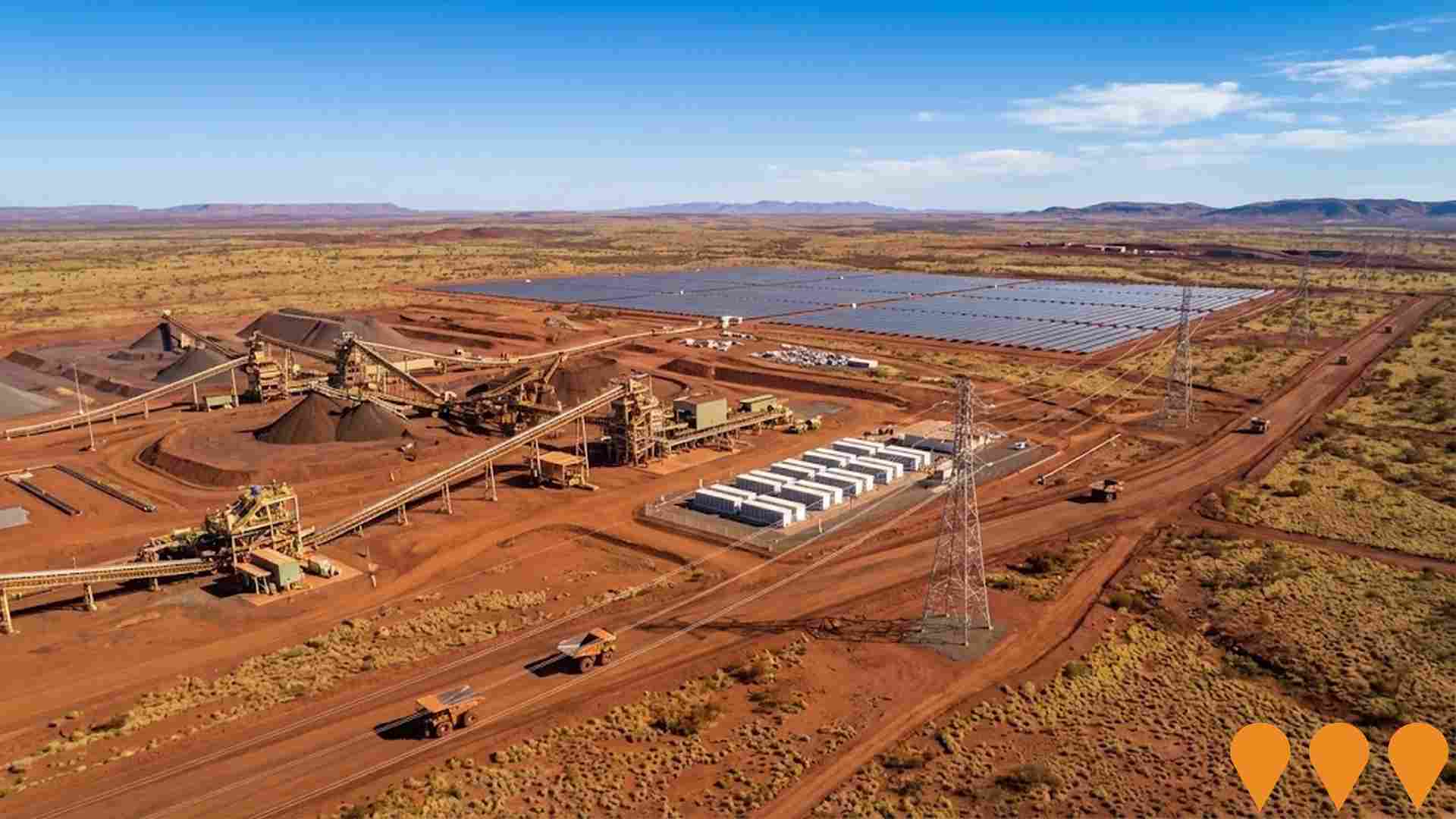
Pilbara Energy Transmission and Storage Infrastructure
State-led program to develop common-use transmission and storage infrastructure across the Pilbara to connect renewable generation to demand centers, lower energy costs and emissions, and support emerging industries including green hydrogen. Early work includes Burrup Common User Transmission Infrastructure linking Maitland SIA to Burrup, and planning for the Pilbara Green Link and other priority corridors under the Pilbara Energy Transition Plan.
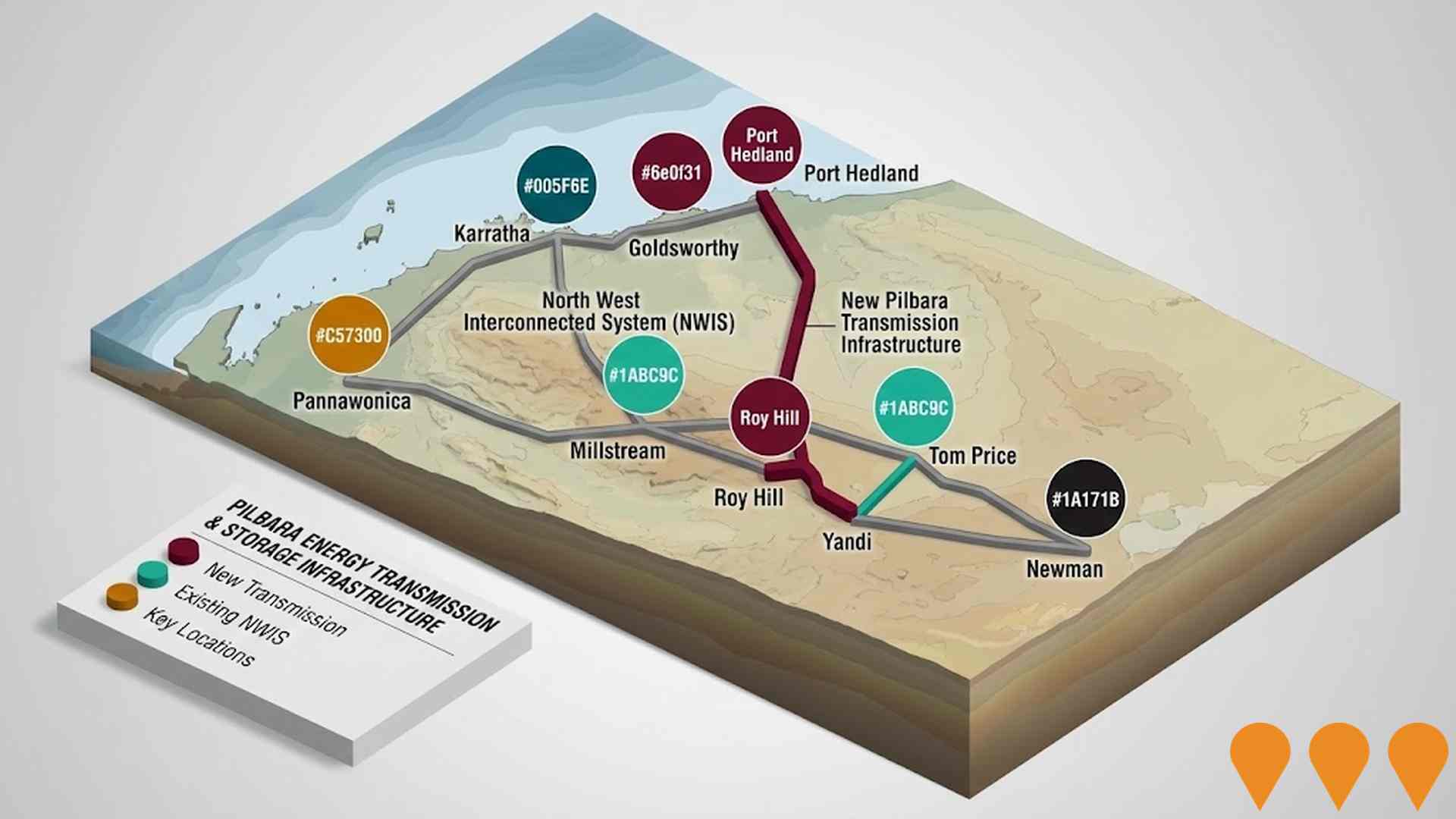
Employment
Karratha ranks among the top 25% of areas assessed nationally for overall employment performance
Karratha has a skilled workforce with strong manufacturing and industrial sectors, and an unemployment rate of 1.9% as of June 2025. There are 11,097 residents employed, with the unemployment rate at 1.3% below Rest of WA's rate of 3.2%.
Workforce participation is high at 72.9%, compared to Rest of WA's 59.4%. Leading industries for employment among residents include mining, construction, and education & training. Mining shows notable concentration with employment levels at 1.8 times the regional average, while agriculture, forestry & fishing has lower representation at 0.2% versus the regional average of 9.3%. Many residents commute elsewhere for work based on Census data.
Over the year to June 2025, labour force levels decreased by 2.5% and employment declined by 2.6%, leaving unemployment broadly flat. In contrast, Rest of WA saw employment rise by 1.1% and unemployment fall by 0.6 percentage points. Jobs and Skills Australia forecasts national employment growth at 6.6% over five years and 13.7% over ten years. Applying these projections to Karratha's employment mix suggests local growth of approximately 5.3% over five years and 11.7% over ten years, based on a simple weighting extrapolation for illustrative purposes only.
Frequently Asked Questions - Employment
Income
The economic profile demonstrates exceptional strength, placing the area among the top 10% nationally based on comprehensive AreaSearch income analysis
AreaSearch reports that Karratha had a median income among taxpayers of $86,822 and an average income of $102,257 in the financial year 2022. Nationally, these figures are exceptionally high, with Rest of WA having median and average incomes of $57,323 and $71,163 respectively. By September 2025, estimated median income is approximately $99,151 and average income is around $116,777, based on a 14.2% growth in the Wage Price Index since financial year 2022. The 2021 Census places Karratha's household, family, and personal incomes between the 98th and 98th percentiles nationally. Income distribution shows that 35.3% of locals (6,755 people) fall into the $40,000+ category, unlike the broader area where the $1,500 - $2,999 category is predominant at 31.1%. Economic strength is evident with 54.9% of households earning high weekly incomes exceeding $3,000, supporting elevated consumer spending. After housing costs, residents retain 89.5% of their income, reflecting strong purchasing power. The area's SEIFA income ranking places it in the 7th decile.
Frequently Asked Questions - Income
Housing
Karratha is characterized by a predominantly suburban housing profile, with ownership patterns similar to the broader region
In Karratha, as per the latest Census evaluation, 79.5% of dwellings were houses with the remaining 20.5% comprising semi-detached homes, apartments, and other dwelling types. This compares to Non-Metro WA's figures of 81.0% houses and 19.0% other dwellings. Home ownership in Karratha stood at 6.8%, with mortgaged properties at 27.7% and rented ones at 65.5%. The median monthly mortgage repayment was $1,972, lower than Non-Metro WA's average of $2,000. The median weekly rent in Karratha was recorded at $320, compared to Non-Metro WA's $220. Nationally, Karratha's mortgage repayments were higher than the Australian average of $1,863, while rents were substantially lower at $375.
Frequently Asked Questions - Housing
Household Composition
Karratha has a typical household mix, with a fairly typical median household size
Family households compose 74.6% of all households, including 42.5% couples with children, 24.3% couples without children, and 7.1% single parent families. Non-family households constitute the remaining 25.4%, with lone person households at 21.8% and group households comprising 3.6%. The median household size is 2.8 people, which aligns with the average for the Rest of WA.
Frequently Asked Questions - Households
Local Schools & Education
Karratha shows below-average educational performance compared to national benchmarks, though pockets of achievement exist
Educational qualifications in Karratha trail regional benchmarks, with 22.4% of residents aged 15+ holding university degrees compared to 30.4% nationally (Australian Bureau of Statistics, 2016). Bachelor degrees are the most common at 15.8%, followed by postgraduate qualifications (3.9%) and graduate diplomas (2.7%). Trade and technical skills are prominent, with 48.9% of residents aged 15+ holding vocational credentials – advanced diplomas (10.8%) and certificates (38.1%). Educational participation is high, with 39.2% of residents currently enrolled in formal education.
This includes 17.4% in primary education, 10.5% in secondary education, and 2.5% pursuing tertiary education (City of Karratha, 2021). A network of 8 schools operates within Karratha, educating approximately 4,370 students as of 2021. This includes 6 primary schools serving students aged 5-12 and 2 secondary schools catering to students aged 12-18 (Department of Education Western Australia, 2021). Educational conditions vary across Karratha.
Frequently Asked Questions - Education
Schools Detail
Nearby Services & Amenities
Transport
Transport servicing is very low compared to other areas nationally based on assessment of service frequency, route connectivity and accessibility
Transport analysis indicates 12 operational transport stops in Karratha, consisting of a mix of buses. These stops are served by 2 distinct routes, offering a total of 22 weekly passenger trips. Transport access is deemed limited, with residents generally residing 677 meters from the nearest stop.
Service frequency averages 3 daily trips across all routes, equating to approximately 1 weekly trip per individual stop.
Frequently Asked Questions - Transport
Transport Stops Detail
Health
Karratha's residents boast exceedingly positive health performance metrics with very low prevalence of common health conditions across all age groups
Karratha's health outcomes data shows excellent results with very low prevalence of common health conditions across all age groups. The rate of private health cover is exceptionally high at approximately 73% of the total population (13,893 people), compared to the national average of 55.3%.
The most prevalent medical conditions are asthma and mental health issues, affecting 6.3% and 5.9% of residents respectively. A total of 82.1% of residents report being completely clear of medical ailments, slightly higher than the Rest of WA's figure of 81.3%. As of 2021, 2.5% of Karratha's population is aged 65 and over (474 people). Health outcomes among seniors are particularly strong, aligning with the general population's health profile.
Frequently Asked Questions - Health
Cultural Diversity
The level of cultural diversity witnessed in Karratha was found to be above average when compared nationally for a number of language and cultural background related metrics
Karratha's cultural diversity was above average, with 23.7% of its population born overseas and 14.6% speaking a language other than English at home. Christianity was the predominant religion in Karratha, comprising 36.5% of people. Buddhism was overrepresented compared to the rest of WA, making up 2.1% vs 1.8%.
The top three ancestry groups were Australian (27.3%), English (26.0%), and Other (8.5%). Notable divergences included Maori at 1.7%, New Zealand at 1.3%, and Australian Aboriginal at 6.8%.
Frequently Asked Questions - Diversity
Age
Karratha hosts a very young demographic, ranking in the bottom 10% of areas nationwide
Karratha's median age is 32 years, which is younger than Rest of WA's 40 and Australia's 38-year average. The 25-34 age group makes up 20.0% of Karratha's population, compared to Rest of WA's percentage and the national average of 14.5%. The 65-74 cohort is less prevalent at 2.1%. From 2021 to present, the 25-34 age group has increased from 18.8% to 20.0%, while the 5-14 cohort has decreased from 17.6% to 16.1%. By 2041, population forecasts indicate that Karratha's 25-34 age cohort will increase by 955 people (25%), reaching 4,791 from the current 3,835. Conversely, population declines are projected for the 75-84 and 65-74 cohorts.
